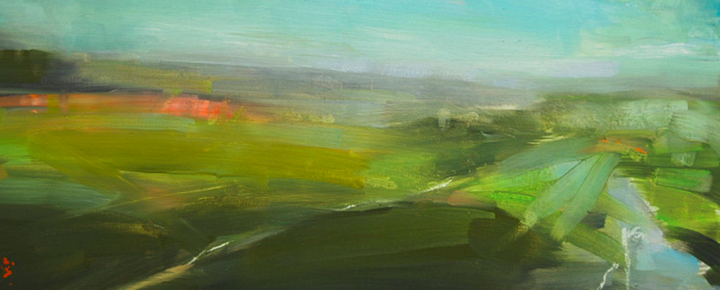On a trip to Oslo this spring, I was introduced to a fascinating, genuinely countercultural phenomenon: “Slow TV“, in which mundane events, some lasting days, are broadcast in their entirety, unedited and in real-time.
Slow TV got its start in Norway in 2009, when the Norwegian state broadcaster NRK televised a six-and-a-half-hour train ride from Oslo to Bergen (available in its entirety here). To almost everyone’s surprise, more than one in five people in the country tuned in for at least some of it.
That success was followed in 2011 by a five-day long piece of footage of a ship making its way up the Norwegian coastline (available in full here). Then twelve hours of watching a log burn. Then eighteen hours of salmon swimming upstream. Recently, NRK broadcast a 9-hour “National Knitting Evening“, which featured a team trying, paradoxically, to beat a world speed record in taking wool “from sheep to sweater” – a record held by the Australians. The Norwegians failed in their attempt – but in a country of four million people, 1.3 million of them watched at least four hours of a broadcast which included four hours of discussion and eight and half hours of “long, quiet sequences of knitting and spinning”. (A two-hour excerpt is available here.) This was followed by The Piip-Show, a three-month experiment in which you could follow the lives of birds in a feeder internally decorated to look like a coffee bar. Slow TV has even inspired at least one parody – a local radio station streamed real-time footage of an abandoned porcelain toilet left by the side of the road, though in a violation of the form, it remained there for less than an hour and half before being picked up.
Why on Earth would any of this succeed? The Norwegians who told me about the Slow TV movement expressed considerable pride in its existence. One woman in her 20’s told me, “Everything moves so fast now, going slow is the new punk.” Another told me that the absence of a narrative allowed her to look – really look – at what she was seeing on the screen – and to notice details she would have otherwise missed. And middle-aged man told me he found the broadcasts comforting, and that he and his mother had watched a bit together, talking about life while the train’s gentle rumbling filled her small parlor, then fell into an easy silence for a bit, while looking out the virtual window – in other words, what people on trains actually do.
Image: Detail, View from a Train #3,